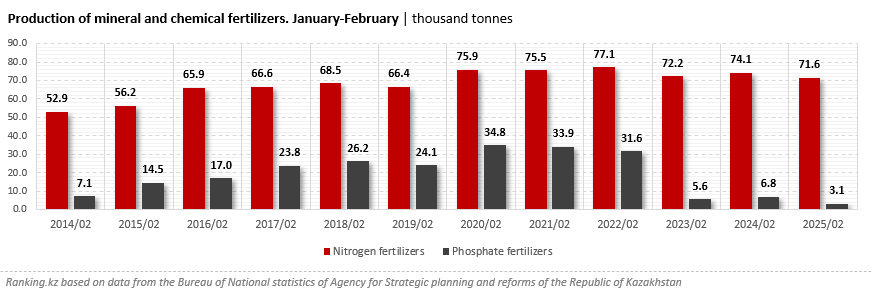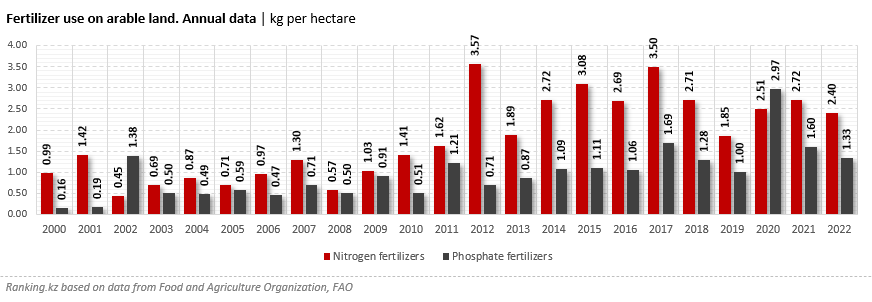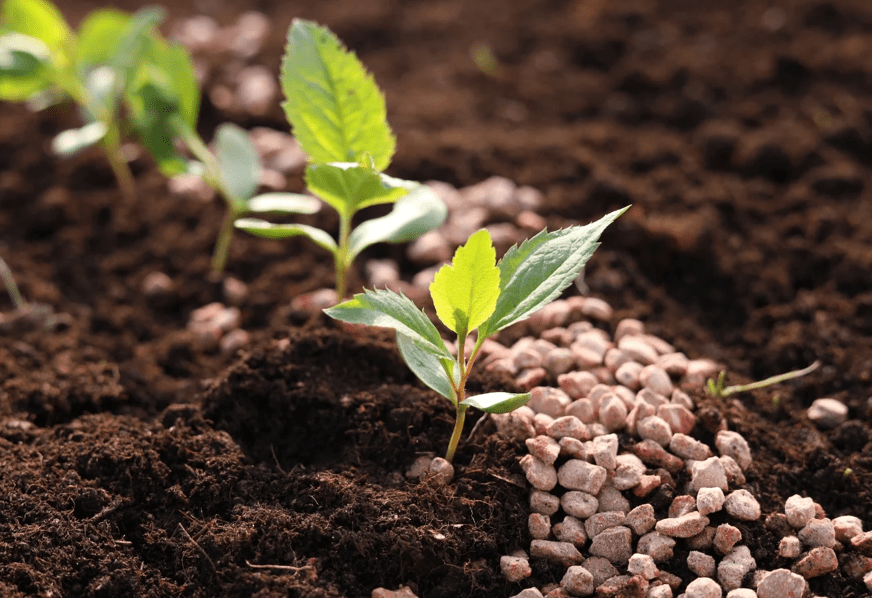In 2024, production of mineral and chemical fertilizers in Kazakhstan decreased by 9.3%, amounting to 367.5 thousand tons. The bulk was nitrogen fertilizers, totaling 345.5 thousand tons, down 11.4% from the previous year. Conversely, phosphorus fertilizer production increased by 47.1%, reaching 22 thousand tons.
The nitrogen fertilizer market remains heavily reliant on imports, with their share at 57.8%. Annual import volumes grew by 7.3%, reaching 472.3 thousand tons. Meanwhile, domestic chemical plants almost entirely meet domestic demand for phosphorus fertilizers, and the import share decreased slightly from 1.4% to 1.2%.
Exports of nitrogen fertilizers doubled over the year, reaching 214.4 thousand tons, while phosphorus fertilizer exports rose by just 6.7%, totaling 5.3 thousand tons.
Domestic market consumption shows mixed trends. Domestic sales of nitrogen fertilizers have declined for two consecutive years: in 2024, they amounted to 60.3 thousand tons, down 16.6% year-on-year. Conversely, domestic phosphorus fertilizer sales rose sharply by 66.1%, reaching 17.1 thousand tons. However, despite this increase, these numbers remain well below the levels of 2017–2022, when annual domestic sales ranged from 133.6 thousand to 196.4 thousand tons.

Alarmingly, according to the Food and Agriculture Organization of the United Nations (FAO), Kazakhstan’s use of nitrogen fertilizers has never exceeded 4 kg per hectare of arable land since 2000 and declined further to 2.4 kg per hectare in 2022. A similar trend is observed for phosphorus fertilizers: their application never exceeded 3 kg per hectare, dropping to just 1.33 kg per hectare in 2022.
For comparison, in Uzbekistan in 2022, nitrogen fertilizer usage was 187.24 kg per hectare, and phosphorus fertilizer was 12.1 kg per hectare. In Russia, these figures were 17.63 kg and 5.91 kg, respectively. Thus, Kazakhstan ranks last among Central Asian and EAEU countries in terms of nitrogen and phosphorus fertilizer usage.
Another pessimistic development: in 2025, fertilizer production in Kazakhstan continued to decline. In January–February, the output of nitrogen fertilizers amounted to 71.6 thousand tonnes — down 3.4% compared to the same period last year. The production of phosphate fertilizers dropped more than twofold to 3.1 thousand tonnes.



